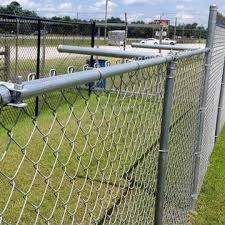The Art and Challenge of Pulling Barbed Wire
Barbed wire, often associated with farms, ranches, and even military installations, serves not only as a physical barrier but also as a symbolic one. Its twisted, sharp strands represent boundaries, protection, and sometimes, confinement. The process of pulling barbed wire may seem straightforward, but it involves careful considerations of technique, safety, and efficiency.
Understanding Barbed Wire
Barbed wire consists of two main components the wire itself and the barbs that are spaced along its length. Typically made of steel, the wire is designed to withstand tension and resist rust through galvanization. The barbs, which can either be twisted or arranged in loops, are what make it an effective deterrent against animals and intruders. When properly installed, barbed wire fences can last for decades, providing both security and demarcation of property lines.
The Importance of Proper Technique
Pulling barbed wire requires more than sheer strength; it demands a sound technique to ensure safety and effectiveness
. Here’s a step-by-step approach to pulling barbed wire1. Preparation Before beginning, ensure you have the right tools. Wire cutters, gloves, and a wire stretcher are essential. Gloves will protect your hands from the sharp barbs, while the wire stretcher will help maintain the wire's tension during the installation process.
2. Planning the Layout It's crucial to map out the route for the barbed wire. This involves measuring the lengths and ensuring that any gates or entry points are accounted for. Careful planning helps in minimizing the amount of wire needed and reduces waste.
3. Setting the Posts Barbed wire is typically strung between posts, which may be made of wood, metal, or concrete. These posts need to be securely set into the ground at appropriate intervals—generally between 10 to 12 feet apart—to maintain tension and stability.
pulling barbed wire

4. Pulling the Wire Once the posts are in place, it’s time to pull the wire. This involves attaching one end of the wire to a post and using the wire stretcher to pull it tight. It’s essential to apply consistent tension, as slack can lead to sagging over time. Be mindful of the barbs; improper handling can result in injury.
5. Attaching Barbed Wire After pulling the wire taut, it must be securely fastened to each post. This can be done using wire ties or clips. Ensuring the barbed wire is properly attached prevents it from loosening and losing its deterrent effect.
6. Final Check Before considering the job complete, it's vital to check the entire length of the fence for proper tension and attachment. Any loose sections can be adjusted, and any damaged areas should be repaired immediately.
Safety First
While pulling barbed wire may seem straightforward, safety is paramount. The barbs can cause significant injuries, and the wire itself has a strong recoil if tension is released suddenly. Proper equipment and safety gear, such as gloves and long sleeves, can help mitigate these risks. Moreover, working in pairs can be beneficial; having a partner allows for better communication and support during the fencing process.
The Benefits of Barbed Wire Fencing
Barbed wire fencing offers numerous advantages. It is cost-effective, durable, and requires minimal maintenance. This type of fencing is particularly effective in keeping livestock contained and predators at bay. Furthermore, it can mark property boundaries clearly, reducing disputes between neighbors.
Conclusion
Pulling barbed wire is more than just a physical task; it is a blend of artistry and practicality. With the right techniques, tools, and safety measures, anyone can effectively install a barbed wire fence that serves its intended purpose. Whether for farming, security, or simply demarcating land, understanding the nuances of this task can lead to successful outcomes and a sense of accomplishment.
















